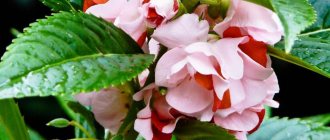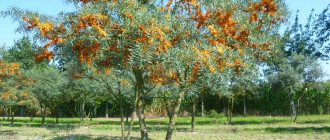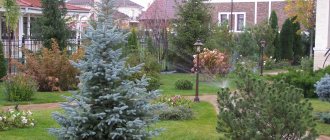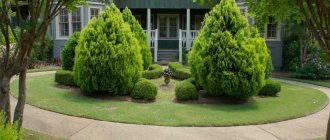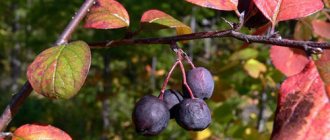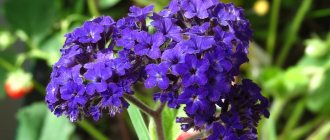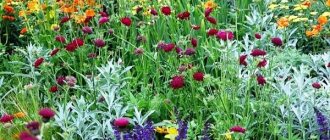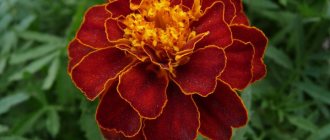Planting begonias
Growing outdoors is tuberous begonia , also known as annual begonia , which can be grown from seeds and tubers.
When to plant
The best time to plant tender plants in the garden is June , when warm weather sets in without the threat of severe cold. Please note that begonia does not tolerate even the shortest frosts and dies immediately.
Sowing seeds
To get a flowering plant in summer, seeds are sown for seedlings in February .
You will need a container, preferably a wooden box, which is filled with loose, light substrate. It is made from river sand, garden soil and high peat, mixing equal parts of the components. The seeds are placed evenly in the already moistened soil and lightly compacted, without covering them with soil on top. Finished plantings must be covered with thin glass or a film of polyethylene to create a greenhouse effect. You need to water very carefully so as not to wash away the soil and drown the smallest seeds; it is best to use a finely dispersed sprayer.
Sprouts appear after 6-8 days, after which the greenhouse is removed. The grown seedlings are subsequently thinned out or pruned, maintaining a distance of 1.5-2.5 cm between them.
Selecting a location
Begonia loves light, which provokes more luxuriant flowering . Therefore, seedlings are planted in well-lit areas with shading during the midday hours. This place would be just perfect for a tropical guest.
Soil preparation
The demanding beauty is not able to grow in alkaline, dense and heavy soil.
Slightly acidic soil with good breathability and rich composition is what begonias really need. When planting, organic and mineral fertilizers, peat and compost are added to the garden soil so that the plant quickly adapts and takes root in a new place.
Planting process
A separate hole 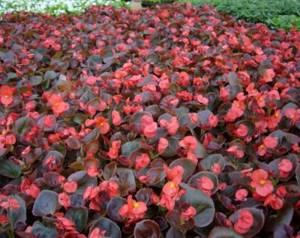
After planting, the soil surface is covered with humus or wood ash. At first, you can cover the seedlings at night so as not to freeze them and give them time to take root.
Garden begonia - description of the plant and popular varieties
Begonia is a flowering plant crop that has a decorative appearance throughout the growing season.
Different types of plants, in addition to unique flowers of different shades and shapes, have graceful leaves.
Foliage may have the following colors:
Rarely, pearl dots or streak patterns may be present on the foliage.
The flower culture grows in the south and north of America, in African and Asian territories.
Any type of garden crops for the garden must be arranged in the shade.
It is also necessary to water systematically and in a normal volume.
The root system of a flower is usually a tuber root.
The following types of begonias are used for planting in the garden:
- Tuberous. The bush reaches a height of 300 mm. Large double and non-double flowers surprise with an abundance of shades. The flowers of tuberous plants are dioecious: male and female flowers can bloom on the same bush at the same time. The size of the flowers is from 60 to 210 mm. Flowers can have different shapes, like a rose, lotus, anemone, or carnation. Popular varieties are Golden Ball, Primadonna, and others.
- Pendula is a special type of flower crop with an ampelous growth form. Elongated bushy shoots are strewn with caps of flowers in different shades. Popular varieties Margarita, Chanson.
- Ever-blooming begonia has a large number of varieties. The bushes grow up to 150 mm. The foliage is small, oval-shaped, smooth, green, and may be slightly brown. The Firemeer and Olomouc varieties are actively used in compositions for decorating park areas and squares. The ever-blooming plant blooms in “caps” of mini-flowers of bright white, soft pink or bright red.
- Graceful. A tuberous perennial with an erect stem and oval-shaped, bright green foliage. The flowers are pale white and bright red, solitary. Popular varieties: Mignon, Weise Pearl.
There are also a lot of varieties of hybrid indoor flowers, among which the most popular are:
- Camellia flora. The bush is neat with bright green foliage, the flowers are voluminous, bright pink with a whitish border.
- Rose. The bush is semi-spreading with double pink flowers.
- Salmon Rose. Spreading bush with double salmon-pinkish flowers.
Care and cultivation
Such a delicate beauty requires constant care so that it pleases with its many inflorescences.
Watering
Only in the evening or morning and with exceptionally warm water under the spine. Otherwise, it is easy to destroy the root system and leaf blades. The interval between watering depends on the weather , on average it ranges from 3 to 5 days; in dry heat, water more often, preventing the soil from becoming too dry.
After the procedure, be sure to loosen the top layer so as not to get stagnation of water that is detrimental to the begonia.
Air humidity
With sufficient watering, the southern plant tolerates even the driest periods. It is strictly not recommended to spray it from above ! Droplets of water falling on flowers and leaves cause the appearance of unsightly brown and chestnut spots.
Top dressing
An actively growing and long-blooming beauty, it consumes nutrients very well and needs a constant supply of new ones. She needs to be “fed” every 12-15 days with a mixture of microelements, which must include phosphorus and potassium. You can use ready-made fertilizer for beautifully flowering plants or directly for begonias.
You can find out more about the rules for caring for begonias here.
Basic rules for caring for garden begonia
Outdoor begonias require the following simple rules regarding care and cultivation:
- For flower beds, choose bright areas without direct sunlight. When growing seedlings, appropriate window sills are suitable. Begonia is shaded during the afternoon sunny hours.
- Water the plants moderately and regularly. Water that flows into the pan can cause root rot. Therefore, it is drained immediately after watering the seedlings. If watering is done with hard water, table vinegar is used to soften it (1 tablespoon per 10 liters of water).
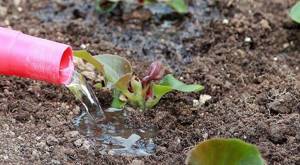
To increase local humidity, bowls with water are placed near the seedlings. But spraying the plant is not recommended.
At the first appearance of an infectious disease in a flower bed, damaged specimens are removed, and neighboring plants are sprayed with a systemic fungicide or potassium permanganate solution. The begonia is transplanted into a flowerbed after 2 months of successful cultivation on the windowsill.
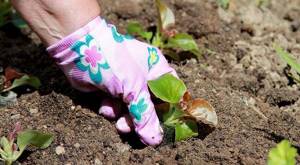
The use of various shades allows you to create exclusive landscape designs. Small bushes are planted at a distance of 20 cm. Mulching the soil surface with peat or sawdust will help maintain moisture in the ground.
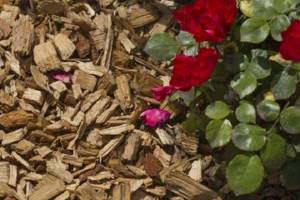
For abundant flowering, begonia outdoors in open ground requires regular application of nutrients. During the period of active growth, complex mineral compositions are added. At the time of bud formation, potassium and phosphorus fertilizers are used. Caring for begonia in the garden involves carefully loosening the soil surface and regular watering. In October, for the winter, the tubers are removed from the flowerbed with the above-ground part. It is recommended to trim the stems, leaving only 3 cm of stumps.
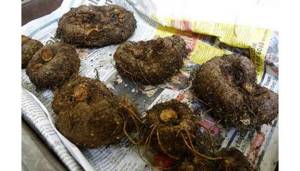
The dug out flower beds are cleared of soil, washed, dried and placed in a dark, cool place for storage.
As you can see, caring for begonia in the garden is very simple. Even beginners can successfully cope with cultivation. Beautiful flowers will delight you with abundant blooms throughout the warm period.
Reproduction
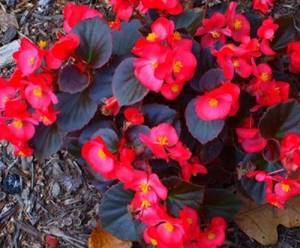
Possibly tubers, cuttings and seeds.
The first method is the simplest and most accessible; it is enough to separate the daughter shoots from a large tuber and plant them separately. Cuttings need to be rooted in a loose substrate , placing them in a greenhouse. This can be done at any time, even in winter. Propagation by seeds is the most labor-intensive method, but it produces a large number of new plants.
You will find more information about methods of propagating begonias in this article.
Preparing for winter
In its natural nature, begonia is an evergreen perennial that can bloom without interruption, even in winter. In our country this is impossible due to the onset of frost, but begonia can be preserved for subsequent planting in the spring.
When the air temperature begins to drop below 15° , the southern plant stops blooming. Inflorescences and leaves dry out and fall off. At this time, from about mid-September to mid-October, all shoots are cut off, leaving a small stump. And the nodules are pulled out of the ground and prepared for wintering.
They can be washed in warm water or simply dried and then shaken off dirt. Dried nodules are placed in a cardboard box or wooden box filled with sand and sent to a cool place with a temperature of 3 to 7° .
For germination, it is enough to move the box with tubers to a warm room and moisten it in a timely manner.
Wintering outdoor begonia in a pot

Diseases and pests
Garden begonia may suffer from attack by pathogenic fungi and harmful insects.
Powdery mildew
A fungal infection covers all above-ground parts of plants with a white coating similar to flour. It is easily erased, but soon appears again. Begonia stops growing, the affected parts gradually fall off as they dry out. Sulfur preparations and fungicidal agents Fundazol, Rovral, Morestan, Hom will help get rid of the scourge.
Gray rot
Fungal disease develops in warm, rainy weather. Watery blotches with a gray coating appear on the affected plants; they quickly turn into rotting brown sores. Shoots break, leaves curl and darken, buds and inflorescences become slimy to the touch. For treatment, fungicides containing copper or innovative products such as Skora, Ordan, Previkura are used.
Aphid
A small pest that feeds on juices. Forms entire colonies that can destroy begonia plantings. Settles on the inside of leaves. Easily destroyed by insecticides - Aktara, Fitoverm, Decis and Aktellik.
Begonia is a very attractive and colorful plant that not everyone can grow on their own. Taking care of it requires a lot of effort and time.
How to plant begonia in the ground?
The critical stage is planting.
Each tuber must be planted in a separate container, preferably in a peat pot. This will make planting in the flowerbed easier, and the root system will be protected.
- The soil should be peaty, enriched with organic matter. Begonias love acidic soil; they grow weakly in alkali and do not bloom. A rational solution is to purchase ready-made soil for garden begonias to grow seedlings.
- When planting, it is necessary to ensure that the root tuber is planted with its sprouts facing upward (if present). It is necessary to fill it with a layer of no more than 25 mm, otherwise the sprouts will not hatch to the surface.
- The temperature regime for high-quality growth is not lower than plus 18 C, optimally plus 21-22 C.
The plant crop is actively germinating - after just a week, neat leaf rosettes will emerge. It’s easy to care for them - water them regularly and feed them with a liquid mixture once every 7 days.
Plant diseases and insect pests
When growing, bushes are often attacked by harmful insects. Flowers are most often infected when growing in a greenhouse.
- Greenhouse aphid.
- Shield.
- False scale insect.
- Whitefly.
- Thrips.
- Nematodes.
The problem should be dealt with using systemic means, the dose of which is indicated in the instructions. Diseases develop due to improper care, frequent watering, and incorrectly selected soil.
Therapy is aimed at eliminating the fungi that cause the disease. The bushes must be treated with fungicides.
What can you combine garden begonia with?
Garden begonias look ideal in plantings with lawn herbaceous plants, decorative foliage crops, and border gardens:
It is good to plant next to low-growing bushes, which will create some shade for the begonias and decorate the area.

Begonia everblooming
Photo
Below you can see photos of planting and caring for Garden Begonia:
